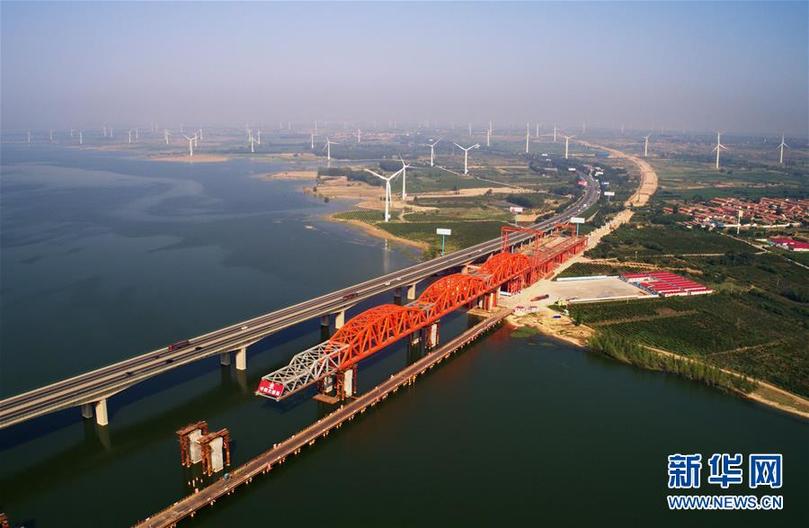


The Beijing-Zhangjiakou high-speed line under construction. (Photo/Xinhua)
China is developing the core technologies related to smart high-speed railways, with the high-speed railway line connecting Beijing and Zhangjiakou in north China's Hebei Province as one of its first attempts in the field.
As a major project for the 2022 Olympic and Paralympic Winter Games, the Beijing-Zhangjiakou high-speed line will be the first in China to adopt a full-lifecycle Building Information Modeling (BIM) approach for all disciplines involved in the project.
The railway is being constructed in a complicated exterior environment, such as the Badaling tunnel, which poses great technological challenges, according to the China State Railway Group.
The BIM strategy can visualize the construction process in a three-dimensional way, providing possible solutions to optimize the design and reducing mistakes and losses during construction.
The Beijing-Zhangjiakou railway line, expected to be put into operation by the end of 2019, is also the first in China equipped with self-driving technology with a maximum designed speed of 350 kph, which makes it greener and more efficient.
After braking, it will stop to within a margin of error of 10cm and will not be delayed due to driving-related problems.
Technologies such as facial scanning to get into the station, 5G, convenient transfer, and smart instructions have been introduced into the stations to bring convenience and comfort to passengers.
In addition, an intelligent monitoring system will check for wind, rain, earthquakes, landslides and other conditions along the railway line and alert railway workers in emergency situations.
 Fire brigade in Shanghai holds group wedding
Fire brigade in Shanghai holds group wedding Tourists enjoy ice sculptures in Datan Town, north China
Tourists enjoy ice sculptures in Datan Town, north China Sunset scenery of Dayan Pagoda in Xi'an
Sunset scenery of Dayan Pagoda in Xi'an Tourists have fun at scenic spot in Nanlong Town, NW China
Tourists have fun at scenic spot in Nanlong Town, NW China Harbin attracts tourists by making best use of ice in winter
Harbin attracts tourists by making best use of ice in winter In pics: FIS Alpine Ski Women's World Cup Slalom
In pics: FIS Alpine Ski Women's World Cup Slalom Black-necked cranes rest at reservoir in Lhunzhub County, Lhasa
Black-necked cranes rest at reservoir in Lhunzhub County, Lhasa China's FAST telescope will be available to foreign scientists in April
China's FAST telescope will be available to foreign scientists in April "She power" plays indispensable role in poverty alleviation
"She power" plays indispensable role in poverty alleviation Top 10 world news events of People's Daily in 2020
Top 10 world news events of People's Daily in 2020 Top 10 China news events of People's Daily in 2020
Top 10 China news events of People's Daily in 2020 Top 10 media buzzwords of 2020
Top 10 media buzzwords of 2020 Year-ender:10 major tourism stories of 2020
Year-ender:10 major tourism stories of 2020 No interference in Venezuelan issues
No interference in Venezuelan issues
 Biz prepares for trade spat
Biz prepares for trade spat
 Broadcasting Continent
Broadcasting Continent Australia wins Chinese CEOs as US loses
Australia wins Chinese CEOs as US loses